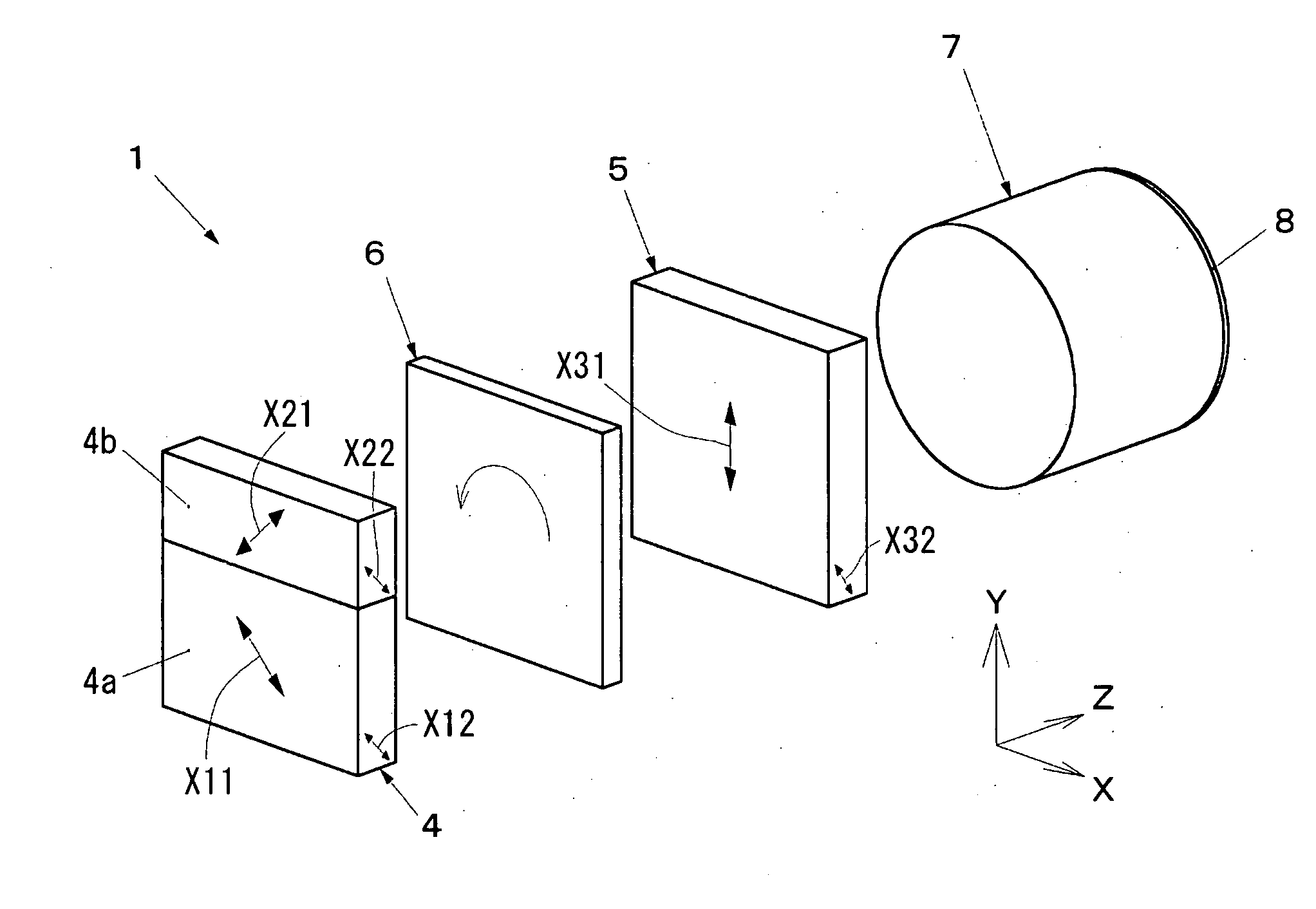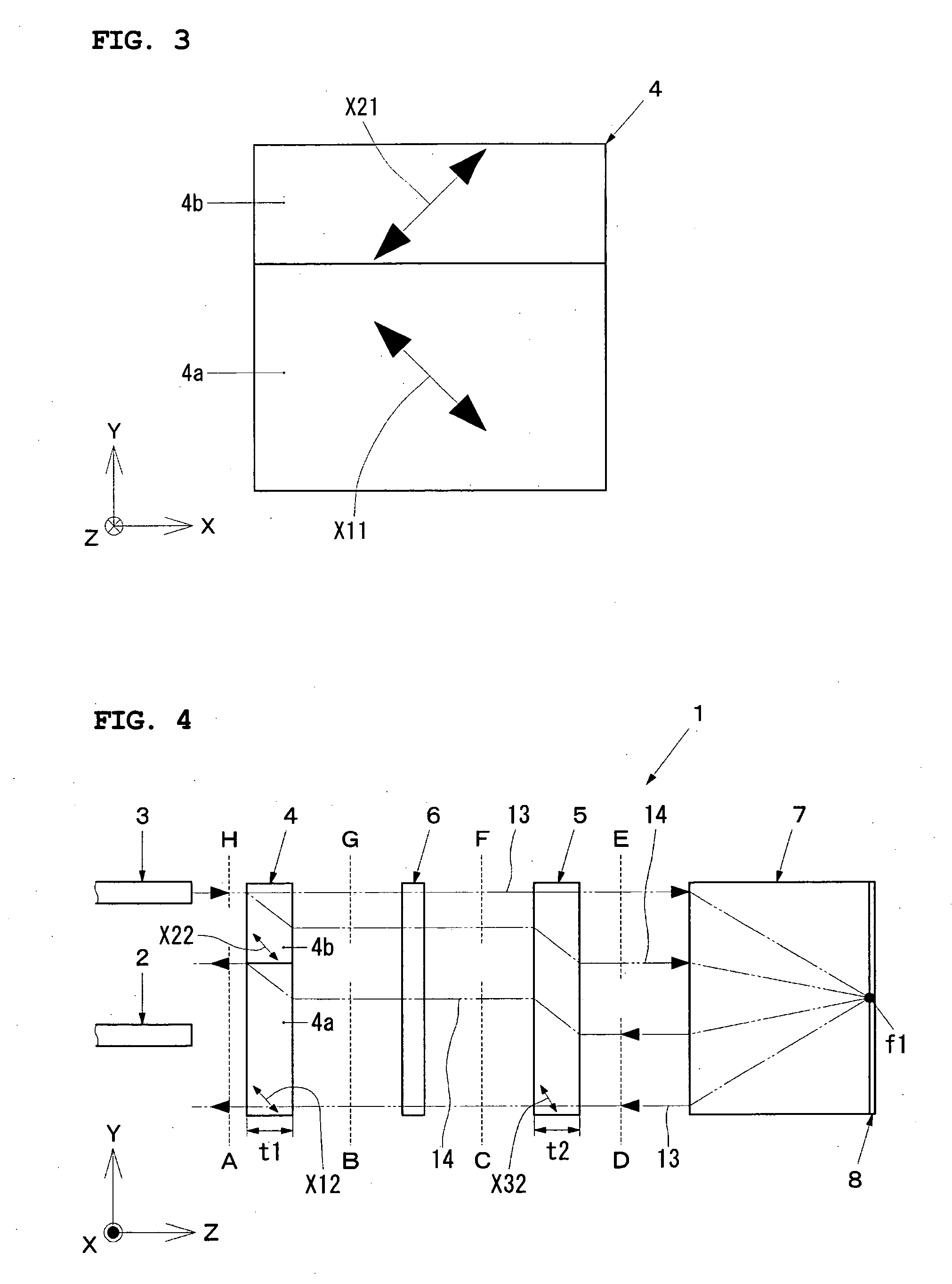Optical isolator and optical device
a technology of optical isolators and optical devices, which is applied in the direction of optics, polarising elements, instruments, etc., can solve the problems of the dimension of the optical isolator in the direction along the optical path is large, and the difficulty in reducing the size of the amplifier, so as to reduce the number of optical elements used for forming the optical isolator, the manufacturing process and the manufacturing cost of the optical isolator can b
- Summary
- Abstract
- Description
- Claims
- Application Information
AI Technical Summary
Benefits of technology
Problems solved by technology
Method used
Image
Examples
first embodiment
[0078] A first embodiment of the present invention will be described in detail below with reference to FIG. 1 to FIG. 6. FIG. 1 is a schematic perspective view showing an optical isolator according to a first embodiment of the invention; FIG. 2 is a side view of an optical device comprising the optical isolator in FIG. 1 and a plurality of optical fibers optically coupled to the optical isolator, showing optical paths when light propagates in the forward direction; FIG. 3 is a plan view of a first birefringent element which is a constituent component of the optical isolator in FIG. 1, viewed from the side facing the optical fibers; and FIG. 4 is a side view of the optical device, showing optical paths when light propagates in the reverse direction.
[0079] As shown in FIG. 1 to FIG. 4, an optical isolator 1 is constituted by a first birefringent element 4 (rutile type crystal), a second birefringent element 5 (rutile type crystal), a Faraday rotator 6, a magnet (not shown) for magnet...
second embodiment
[0161] A second embodiment of the present invention will be described in detail below with reference to FIG. 8 to FIG. 10. FIG. 8 is a schematic perspective view showing an optical isolator according to a second embodiment of the invention; FIG. 9 is a side view of an optical device comprising the optical isolator in FIG. 8 and a plurality of optical fibers optically coupled to the optical isolator, showing optical paths when light propagates in the forward direction; and FIG. 10 is a side view of the optical device, showing optical paths when light propagates in the reverse direction. Note that similar parts to those of the optical isolator 1 and the optical device described in the description of first embodiment are assigned the similar number, and descriptions thereof are omitted or simplified.
[0162] As shown in FIG. 8 to FIG. 10, an optical isolator 1′ is constituted by a first birefringent element 4 (rutile type crystal), a second birefringent element 5 (rutile type crystal), ...
PUM
| Property | Measurement | Unit |
|---|---|---|
| rotation angle | aaaaa | aaaaa |
| angle | aaaaa | aaaaa |
| angle | aaaaa | aaaaa |
Abstract
Description
Claims
Application Information
 Login to View More
Login to View More - R&D
- Intellectual Property
- Life Sciences
- Materials
- Tech Scout
- Unparalleled Data Quality
- Higher Quality Content
- 60% Fewer Hallucinations
Browse by: Latest US Patents, China's latest patents, Technical Efficacy Thesaurus, Application Domain, Technology Topic, Popular Technical Reports.
© 2025 PatSnap. All rights reserved.Legal|Privacy policy|Modern Slavery Act Transparency Statement|Sitemap|About US| Contact US: help@patsnap.com



